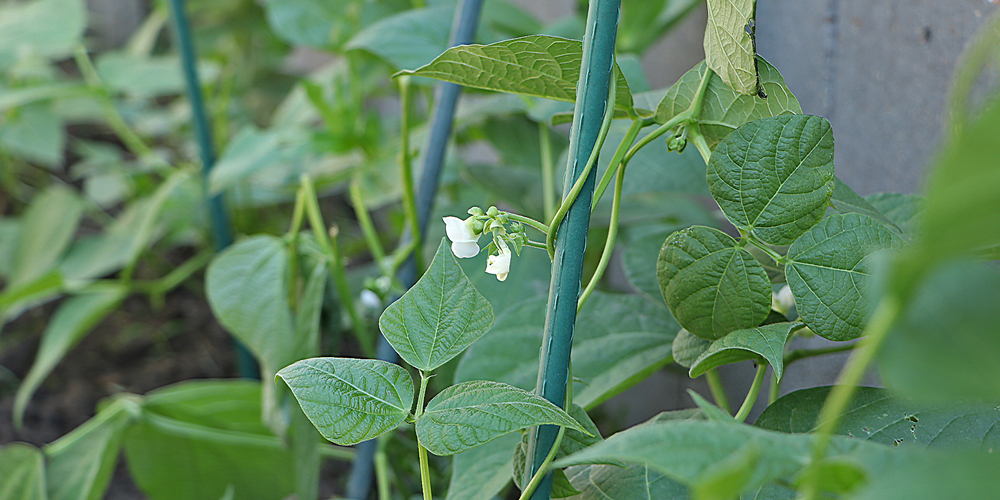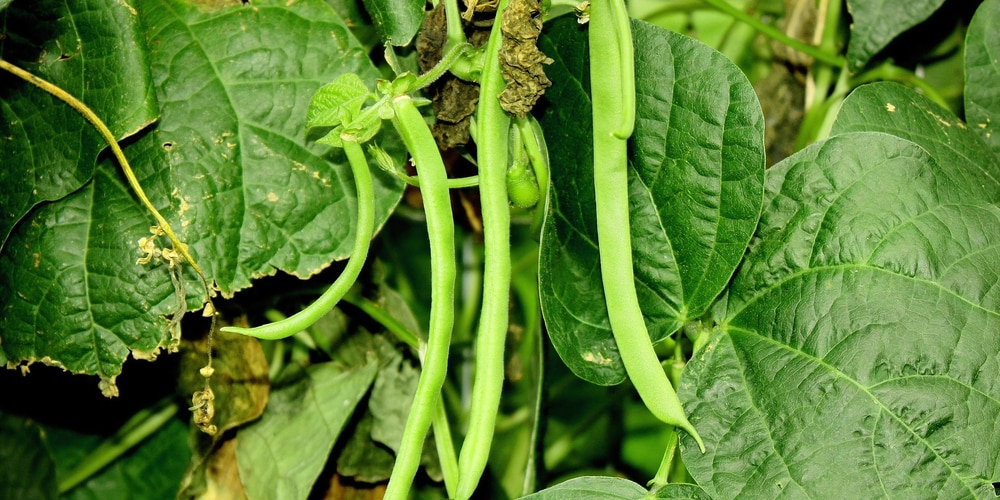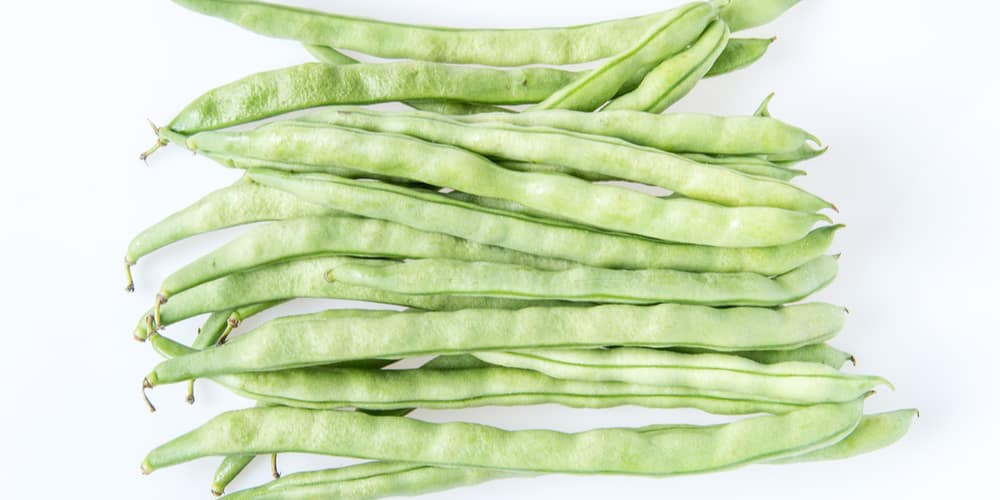If you’re growing pole beans in your garden, harvesting them at the right time is essential for getting the best flavor and texture from your beans.
Pole beans get their name because this green bean plant will climb up a pole, string, or trellis. You can plant pole beans without staking them, but they will produce more beans if they have a structure to climb. Green beans are the harvested seed pods of green bean plants.
Green beans can also be grown on plants that don’t climb. These green bean plants are called bush beans. Both produce delicious vegetables, but pole beans are the most productive. A plus for pole beans is that they can be grown vertically so don’t need as much land.
When picking pole beans, you want to harvest them at the “Goldilocks” time – not too young when the pod is too small, not too old when pole beans can be stringy and dried up, but just right.
When To Pick Pole Beans
Green beans, the fruit of pole bean varieties such as Kentucky Wonder, Blue Lake Stringless, and Scarlet Runner, are easy vegetables to grow. Rich in vitamins A, B-6, K, and E, pole beans are delicious whether steamed, simmered, or stir-fried.
Serve them cold in a Salad Niçoise or warm with entrees such as grilled chicken or a pot roast. Green beans can even be pickled. Freshly picked green beans are one of the summer’s most delicious and versatile flavors.
Pole bean plants love having full sun. These plants will still grow in partial shade but will not produce as many green beans. Adorned with delicate flowers, pole bean plants are beautiful garden additions, but when their flowers fade, they leave delicious, healthy green beans in their place.
Read the seed packet and mark the days on your calendar. Most pole bean varieties have green beans ready to harvest about 60 days after planting. If you planted your pole beans in late April, you could be harvesting pole beans for dinner by the end of June.
There are other ways to tell whether your pole beans are ready to harvest, though.
Is a Pole Bean Ready To Pick?
When a pole bean is ready to pick, you’ll notice signs that will signal it’s at its peak of flavor and has the best texture.
The Size of the Pod
Depending on the variety, your pole beans will be ready to pick when the pods are about 4 to 7 inches long. These pods, growing where the flowers of the pole bean plants were, should be about as thick as a pencil. Seeds should not be bulging inside the pod, and the bean should feel firm. The best green beans are crisp when snapped into pieces.
Firmness
Firm pole beans have the highest moisture content and best texture. The pole bean pod should be tender but plump. The best way to know if your green beans are ready to harvest is to try picking one. The pole bean should snap off the plant easily.
Size of Seeds
Pole bean seed seeds should be small enough not to bulge. When seeds do bulge from pole bean pods, it indicates that the seeds have grown large, and the pod’s structure has thinned. Both conditions indicate that a pole bean has passed its prime for picking.
What Happens if You Miss a Pod?
It happens to every gardener. A weekend trip or a busy day keeps you away from the garden, and when you return to check on your pole bean plants, you realize that there are pods that should have been harvested earlier.
If your pole bean vines have some pods that should have been harvested days ago, don’t worry. While your pole bean may not be one you want to serve, you can save the seeds for planting next year.
When you leave pods on the pole bean plants for too long, your pole bean plant begins to focus on reproduction from the seeds it has already produced instead of producing more seed pods.
Check your plants carefully for forgotten pole bean pods and harvest them regularly. Picking green beans will encourage pole bean plants to grow more beans.


